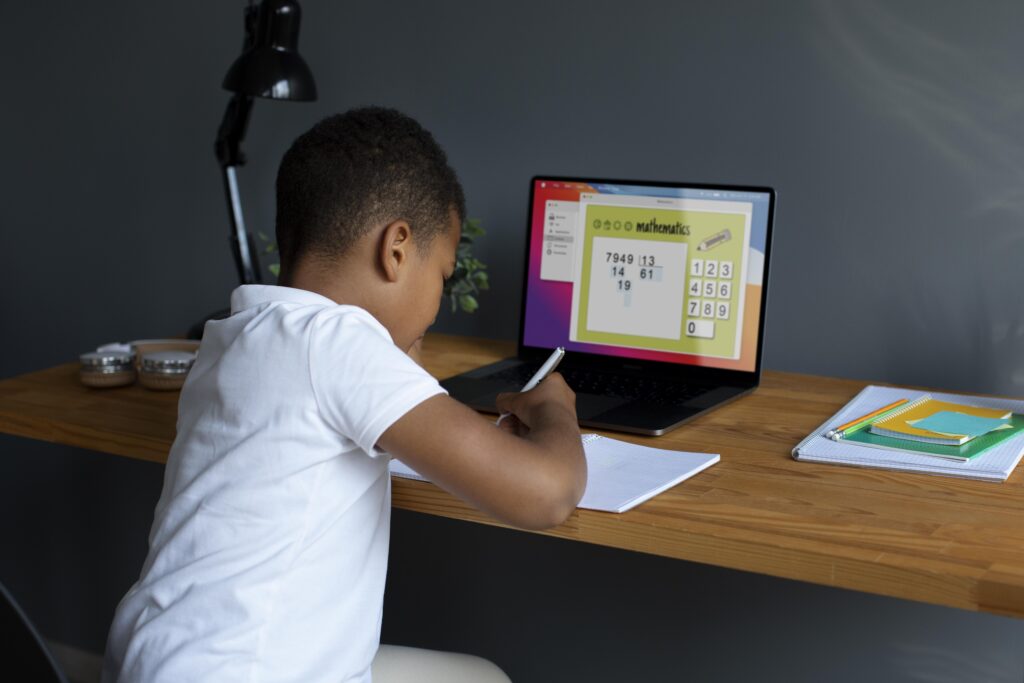The Texas Commission on Virtual Education has been meeting to determine what virtual learning will look like in the state of Texas. This commission was created by HB 3643 (87R).
About the Texas Commission on Virtual Education
The commission’s stated purpose is “to develop and make recommendations regarding the delivery of virtual education in the public school system and state funding for virtual education under the Foundation School Program.” The commission is made up of thirteen individuals that were nominated by the Governor, the Lieutenant Governor, the Speaker of the House, and the State Board of Education. They met on February 23, March 30, and again on April 27.
February 23 Commission Meeting
In the February 23 meeting, the commission got a chance to hear from the TEA Commissioner, Mike Morath, and Operation Connectivity representative, Gaby Rowe. This gave the commission a chance to gain insights into the status of virtual education in the state of Texas, including information on student access to digital devices and at-home broadband.
March 30 Commission Meeting
At the March 30 meeting, the commission got a chance to learn all the different ways a student could access virtual learning in Texas. Chris Bigenho from Lewisville ISD described their district’s participation in the Texas Virtual School Network as part of the TxVSN’s catalog offerings. They offer high school courses that students can take to supplement their education. The catalog is designed to provide access to courses students want to take outside of their normal school load. This may be in the summer or during the normal school year.
Texas Tech University K-12 Program provided the commission with a description of their full-time online school. Texas Tech has been delivering virtual education for K-12 students since 1993. They are designated as a special purpose district which gives them authority to serve K-12 Texas students virtually outside of the TxVSN.
Like Lewisville, Guthrie Common School District provides courses in the TxVSN catalog. Guthrie is a very small rural district and has created a unique opportunity to not only serve its students but to serve other rural communities via virtual education. Summer Reel, the program administrator for the Guthrie Virtual School, indicated that in addition to helping their students have access to courses they might not otherwise be able to take, this type of learning modality is “conditioning students for life.”
Outstanding Questions
After listening to more than five hours of testimony, the issues the commission may have to deal with are becoming more apparent. Below are some of the questions I believe the commission should address.
Funding

One of the primary issues that needs to be addressed is how a district should be funded for students receiving a virtual education. John Watson of the Evergreen Education Group and the Digital Learning Collaborative made it clear that virtual education should be funded at the same rate as in-person learning. A school must provide all of the same services that in-person students receive (counseling, special education, etc.). In addition, virtual learning relies on the innovation of the technology industry. Therefore, a district must budget for a robust technology infrastructure and software applications that help deliver quality education.
The other question that must be answered is what do you fund? Currently, the schools that offer courses in the TxVSN only receive funding if the student successfully completes the course. However, SB 15 stipulates a student enrolled in a virtual course under the remote learning program will be counted toward the school district’s ADA in the same manner as other district or school students. Rules have been adopted on how districts should take attendance in the remote environment.
However, several individuals at the hearing suggested that the state should instead fund remote learning based on enrollment. They suggested that attendance doesn’t work because students should be able to move through the course at their own pace. They also argued that it isn’t fair to only fund the students who successfully complete the course. Districts are hiring personnel and purchasing software, hardware, instructional materials, and other supplies based on the number of students who enrolled just as districts do for in-person learning. Some of those that testified also argued that since districts are being held accountable for their students’ academic performance, there is an incentive to ensure that they do whatever they can to help their students succeed.
Quality

Making sure that students are performing in a remote environment is critical to the success of this initiative. No one believes this is how all or even most students should learn, but for some students, remote learning is a godsend. Therefore, districts strive to ensure that their remote students receive a quality education.
Several issues that may need to be addressed are student-to-teacher ratio, teacher quality, instructional materials, and the instructional design of the online experience. Those who testified for the commission made it clear that what happened during the pandemic was not true online learning. During the legislative session, Senator Larry Taylor compared pandemic learning to a M.A.S.H. unit. This is one of the best analogies I’ve heard. Quality online learning should look like a state-of-the-art operating room, not a M.A.S.H. unit. These types of programs take time to create and develop as well as teachers who have been purposely trained to teach from a distance. Ensuring quality is critical to the success of any learning endeavor, especially those that happen asynchronously.
Texas Virtual School Network (TxVSN)
SB 15 allowed school districts to offer remote learning for students within their own district boundary lines. Districts that chose to do so are not governed by the rules set up for the TxVSN. Instead, SB 15 was seen more as a band-aid during the legislative interim. However, the commission’s charge was to review the entire landscape of distance education in Texas and make recommendations that reflect on the educational, cultural, and technological changes that have taken place since the inception of the TxVSN.
The Future of Virtual Education

Virtual learning can meet a variety of needs of both students and districts, and all policy changes should not only address those needs but accommodate them. Students will still need options to supplement their in-person schooling thus the state needs to continue to encourage districts to offer these stand-alone courses for their students as well as students across the state. This is necessary for smaller and rural schools that do not have enough students to hire a full-time teacher or that are having a hard time hiring one that is qualified.
In addition, districts may want to offer their own stand-alone courses that are taught from a distance but do not want out-of-district students to attend these classes. Thus, they have no need to run their courses through the TxVSN. The commission needs to make provisions for districts to do so.
Districts also need to be able to offer a full-time online program for their own students. The commission needs to determine what SB 15 rules should continue and which decisions should be left to district discretion. Since these students will be included in the accountability program, the state should set minimum rules governing how the district achieves this.
The state also needs to recognize that many and maybe even most districts may not choose to offer an online learning program for their students. This means that some students who need or want a full-time online option will need an alternative from their local district. Therefore the state needs to determine how these students can achieve a free and public education offered virtually. The commission needs to revisit the current system and determine if it is the best way we can achieve this goal. It seems that only allowing districts who were grandfathered into offering a full-time virtual school via the TxVSN is not designed for quality. The commission should revisit the method by which students can attend a full-time virtual school outside of their district and come up with a solution that is designed for student success.
Conclusion
HB 3643 came at the perfect time. The pandemic helped legislators and educators recognize there is a place for good quality virtual education. From listening to the testimony thus far, I have hope that the commission will look at the issue holistically and come up with some recommendations that will provide Texas students with what they need; a system that meets their academic needs whether it is delivered in-person or online.

